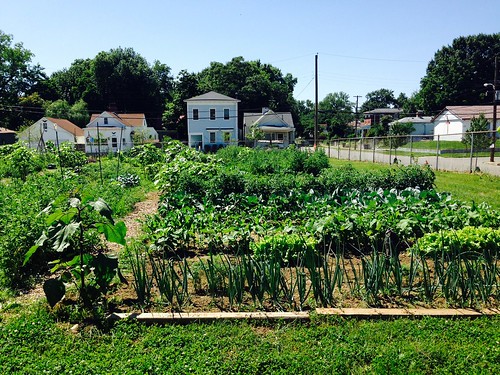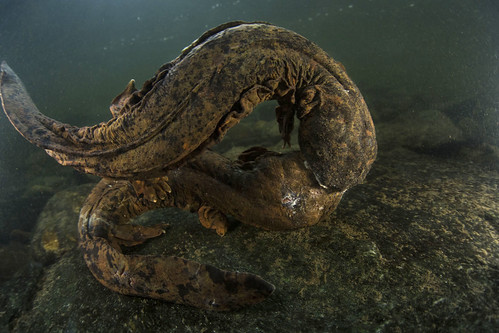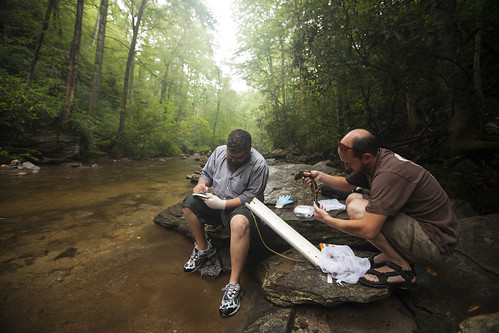February 28, 2015
From U.S. Fish and Wildlife Service Midwest Region:
The country's most at-risk group of animals is not birds or mammals, but freshwater mussels. There are 88 threatened or endangered mussels in the United States, 23 of them in the Midwest. Learn more:http://go.usa.gov/ZuEQ
Photo: Endangered Higgins eye pearlymussels by Gary Wege/USFWS.
Protecting natural resources, including air, land and water. Also of interest are threatened and endangered species as well as endangered species. Conservation (wildlife, soil, water, etc.) issues also discussed. Topics include: RCRA, CERCLA, Clean Water Act (CWA), NEPA, 404 Permits, EPCRA, FIFRA, and others.
Search This Blog
Saturday, February 28, 2015
Friday, February 27, 2015
How Trees Help Fight Climate Change - All Over the World
From USDA:

Posted by Robert Hudson Westover, U.S. Forest Service Office of Communication, on February 27, 2015 at 2:00 PM

A Limber Pine on the near barren landscape of the Craters of the Moon National Monument & Preserve stands as a strong symbol of the power of one tree. (Photo by Robert Westover, U.S. Forest Service)
The first in a series of blogs honoring the United Nation’s 2015 International Day of Forests
Did you know that carbon dioxide, or CO2, is one of the main contributors to the greenhouse gases that are causing climate change?
And, did you know that one averaged-size tree – say a 30-footer – can store hundreds of pounds of CO2 over its lifetime and even longer if it’s used in building materials for a house or furniture?
If this is the power of one tree – imagine what a forest can do. During our 21-day recognition of the United Nation’s International Day of Forests the U.S. Forest Service wants folks to be aware of the power of trees and of our forests.
Since 2013, the UN has selected March 21 of each year to be the unique and specific day that the entire world thinks about the importance of trees. In the Northern Hemisphere it has particular resonance as this is the first day of spring and most deciduous trees, those trees that dropped their leaves in winter, are beginning to bud with new life.
But the symbolism isn’t lost in the Southern Hemisphere as this is when fall begins in the other half of the world and, again, the importance of the cycles of death and renewal are brought to mind as millions of leaves fall to the cooling ground.
In recognition and celebration of the power of trees, starting March 1, the Forest Service is going to post pictures and descriptions of many of our tree varieties located across our National Forests throughout the days leading to 2015’s International Day of Forests.
Related Posts
Soils Support Urban Life
From USDA:



Posted by Kurt Mason, Natural Resource Conservation Service, Kentucky, on February 27, 2015 at 1:00 PM

Community gardens like this one in Louisville, KY, bring neighbors together to produce fresh fruits and vegetables in areas that usually have no access to fresh produce. NRCS photo.
The United Nations General Assembly has designated 2015 as the International Year of Soils. This is one of a continuing series of blogs to mark this observance.
Soil is defined as a dynamic natural body that is made up of solids, liquid and gases and occurs on the earth’s surface, contains living matter, and supports or is capable of supporting plants. But soil is bigger than this.
Civilizations have either flourished or perished partly based on this natural resource and the capability of its people to manage and use it wisely. We all depend on the soil, regardless of where we live – rural or urban.
Urban areas were once undeveloped lands or farms, growing our nation’s food and fiber or supporting an abundance of wildlife. Many people view urban areas as concrete jungles with much of the soil’s redeeming values lost under layers of concrete and asphalt.
But that’s not true. Not only does the soil support urban life, it is also the critical element supportive of the urban lifestyle.
In one block of downtown Louisville, Kentucky, soil is used to grow food and support skyscrapers. On top of the 23-story One Riverfront Plaza, a green roof – with soil – grows a variety of plants. The green roof’s primary purpose is reducing heating and cooling costs, but it also traps and filters rainwater and provides habitat for pollinators.
In that same block, at ground level, a local restaurant grows a garden of herbs in the once alluvial soil mixed with compost created from “waste” generated from the business.

Porous pavers in this Louisville, KY parking lot help prevent flooding by allowing water to seep through. NRCS photo.
And nearby, at 700 West Liberty, porous surfaces and rain gardens with native plants help filter water, increase groundwater recharge and prevent flooding. Porous concrete and pavers cover the ground’s surface, allowing water to seep through and recharge underground water sources.
As you can see, the soils under Louisville have been through many iterations since the city was founded in 1778 and with 237 years of use it continues to still have function and value.
Today, “urban farming” in Louisville is a growing enterprise, as it is in many metropolitan areas. A return to the land mindset and the economics of small-scale food production within walking distances of dense populations has brought a new kind of farmer to city land.
Numerous community gardens, such as the Shippingport Community Garden and The Peoples Garden, brings together numerous residents to engage in conversations about healthy soils, fertility, compaction and many of the same concerns as their larger scale rural counterparts.
Vacant lots, once home to shotgun homes, are being transformed into urban gardens. The soil, predominately a mix of fine sandy loam plus cinder ash and bits of incorporated material from the land’s previous uses, serves as the basis for fruit and vegetable production.
At least 60 percent of the produce marketed on these lots provides food to folks that are without common access to healthy, fresh fruits and vegetables. The deep well-drained soils along the Ohio River have gone full circle from their agricultural beginning to urban development and back to agriculture.
This year, USDA’s Natural Resources Conservation Service is joining partners across the globe to celebrate International Year of Soils. As we mark this occasion, it’s important to step back and realize the many ways this natural resource touches all of us, regardless of where we live.
Learn more about International Year of Soils. To get started with NRCS, visit your local USDA Service Center or www.nrcs.usda.gov/GetStarted.

This green roof in Louisville, KY is beneficial in managing rainwater and helps reduce energy costs for the 23 story building. NRCS photo.
Related Posts
Nesting Eagle
From U.S. Fish and Wildlife Service Midwest Region:
American bald eagles are starting to nest here in the Midwest. Learn more this and other signs of spring:http://on.sctimes.com/
Photo: Nesting eagle courtesy of Darrell Miller/Creative Commons.
American bald eagles are starting to nest here in the Midwest. Learn more this and other signs of spring:http://on.sctimes.com/
Photo: Nesting eagle courtesy of Darrell Miller/Creative Commons.
Keep Learning About Invasive Species
From National Ocean Service:
Why not have fun and continue learning about #invasivespecies this weekend with the kids in The Lionfish Invasion! http://
Why not have fun and continue learning about #invasivespecies this weekend with the kids in The Lionfish Invasion! http://
Body Language of Wolves
From Yellowstone National Park:
Wolves use many different body positions to communicate. The subordinate (center) crouches to defer to the dominant alpha female of the Canyon pack.
Wolves use many different body positions to communicate. The subordinate (center) crouches to defer to the dominant alpha female of the Canyon pack.
Thursday, February 26, 2015
An Amphibian Only a Mother (or Biologist) Could Love Needs your Attention
From USDA:




Posted by Nat Gillespie, Fisheries Program, U.S. Forest Service, on February 26, 2015 at 3:00 PM

The Eastern hellbender is the largest salamander in North America, reaching lengths of up to 24 inches. Hellbenders need clean streams with high water quality and silt-free streambeds to find their prey and avoid predators. (Copyright photo courtesy Freshwaters Illustrated/Dave Herasimtschuk)
Hiding beneath a pile of rocks in a clear mountain stream flowing from the Pisgah National Forest in North Carolina lurks North America’s largest salamander, the Eastern hellbender. It is also locked in battle between its perilous decline and valiant struggle for survival.
Sediment from runoff, prescription and over-the-counter therapeutic and veterinary drugs, personal care products such as soaps, fragrances and cosmetics, other chemical pollutants, and the physical disturbance of its rocky lairs by unknowing recreationalists are all suspects contributing to the hellbender’s decline.
“This iconic symbol for Appalachia’s mountain streams is a timely ambassador for a healthy aquatic ecosystem,” said Lorie Stroup, a fisheries biologist on the Pisgah.
Until recently, this roughly 2-foot long mysterious brown, mottled and wrinkly creature was often misunderstood and even feared. Now, due in part to Forest Service conservation efforts, the fate of this old, native inhabitant now hinges on continued awareness to protect its indigenous habitat.

Lorie Stroup, Forest Service biologist on the Pisgah National Forest, installs a sign to remind forest users about the sensitivity of streambed habitats. (Copyright photo courtesy Freshwaters Illustrated/Dave Herasimtschuk)
Examples of this fascinating and declining species are seen thriving in some remaining pristine steams in a new film by Freshwaters Illustrated, which collaborated with state and Forest Service biologists. “The Last Dragons: Protecting Appalachia’s Hellbenders” provides rare and dramatic footage of this elusive creature, which is now threatening to disappear after eons of thriving in the clean, rocky waters.
This ancient nocturnal amphibian often hides under the same rock for its entire adult life span – up to 30 years – emerging at night to feed largely on crayfish. It breathes through folds of skin along its sides and, while harmless to people, suggests you may be encountering a creature from “The Lord of the Rings.” The hellbender boasts an ancient lineage, remaining largely unchanged since the age of the dinosaurs and for millions of years has found a home in the waters of Appalachia.
“Even though they are these giant salamanders, they blend right into the bottom,” said Jeff Humphries, a wildlife biologist with the North Carolina Wildlife Resources Commission. “People often float right over top of two-foot salamanders and never notice.”

Two male hellbenders locked in a battle for dominance. Hellbenders need clean streams with high water quality and silt-free streambeds to find their prey and avoid predators. (Copyright photo courtesy Freshwaters Illustrated/Dave Herasimtschuk)
In recent efforts, Forest Service biologists who manage these waters have reached out to educate the thousands of people who enjoy the same streams while swimming, tubing and boating. Those same recreationists unknowingly disturb and destroy hellbender habitat by moving rocks on the stream bottom.
“We started about 10 years ago by posting signs saying ‘Don’t move the rocks’ to help educate people about how the hellbender uses the entire ecosystem these rocks provide for food and shelter,” said Stroup. “And we’ve really had a good response. These awesome animals need to have their homes beneath the stream rocks to remain undisturbed and intact.”
Biologists are looking to the hellbender as an indicator species, a highly sensitive organism that reacts to pollution levels in air, soil or in this case water. They are often among the most sensitive species in a region, and can act as an early warning to monitoring biologists. Increases or decreases in their numbers often indicate if an ecosystem is intact or failing.
The Forest Service efforts are helping the mysterious hellbender retain its rightful role as an indicator of high water quality and an intact aquatic ecosystem.
“We want people to enjoy the rivers,” Stroup said. “I did the same thing as a kid. I was out splashing in the creeks and swimming and fishing. That’s really where I got the love of water myself. So we want people out and being able to enjoy the resource, but we want them to leave it as they found it. It’s one thing to skip a stone with your child, but it’s another thing when you’re starting to move hundreds of rocks to build a dam or build some kind of chute to get a tube down.”
The Ozark hellbender, another subspecies, is already listed under the Endangered Species Act. Commonly found in the 1970s, the Ozark hellbender remains in only a handful of pristine waterways on the Mark Twain National Forest. Scientists have yet to determine that hellbender’s alarming failure to reproduce.
The hellbender, historically found from southern New York to eastern Missouri, still maintains healthy populations within the pristine streams of several national forests in the East. Efforts by these forests to prevent siltation of stream habitat through best management practices, protection of large blocks of healthy forest, and now managing recreational use and alteration of streams bodes well for protecting the last remaining pristine Appalachian streams.
“This is all about thinking about the resource,” Stroup adds. “A focus on healthy watersheds is important for the water we drink and keeping the streams healthy for organisms such as hellbenders. Protecting and restoring our streams provides a better habitat for everything.”
Read about another innovative river conservation program and snorkeling to view amazing biodiversity on the Cherokee National Forest.

From left, biologist Jeff Humphries and field technician Michael Sisson, both with the North Carolina Wildlife Resources Commission, monitor hellbender populations in a Pisgah National Forest stream. (Copyright photo courtesy Freshwaters Illustrated/Dave Herasimtschuk)
Related Posts
An Ag Outlook Audience Learns How Voluntary Conservation Can Help At-Risk Wildlife and Reduce the Need for Regulation
From USDA:

Posted by Justin Fritscher, Natural Resources Conservation Service, Washington, on February 26, 2015 at 2:00 PM
Meet seven at-risk species that benefit from habitat restoration and enhancement through NRCS’ Working Lands for Wildlife partnership. Infographic by Jocelyn Benjamin. Click to enlarge.
Regulations may be needed, but are they all we need? That was the common thread weaved through presentations by natural resource experts last week at USDA’s Agricultural Outlook Forum.
Panelists included: Chris Hartley, deputy director of USDA’s Office of Environmental Markets; Jim Serfis, chief of the communications and candidate conservation branch of U.S. Fish and Wildlife Service, (FWS); and Matthew Wohlman, assistant deputy commissioner of the Minnesota Department of Agriculture.
Part of the discussion focused on the voluntary conservation efforts of private landowners, which are having a tremendous impact on meeting regulatory needs through creating habitat for species facing population declines. These efforts – including the Working Lands for Wildlife Partnership, (WLFW), between USDA’s Natural Resources Conservation Service, (NRCS), and FWS – is to help create habitat for at-risk species.
This partnership provides certainty to landowners who use NRCS-prescribed conservation practices to improve their lands in ways that benefit wildlife.
Take for example, the southwestern willow flycatcher, an endangered bird that lives along rivers and streams in the Southwest. Water diversion, groundwater pumping, unmanaged grazing and invasive plants have diminished the riparian habitat, which have led to the bird’s populations declines.
NRCS has worked with FWS to expand conservation work throughout riparian zones in the arid Southwest, including Arizona, California, Colorado, New Mexico, Nevada and Utah.
Through WLFW, NRCS works with private landowners to implement conservation practices that improve habitat for the southwest willow flycatcher while also boosting working lands operations. Since 2012, NRCS and private landowners have put conservation systems on nearly 7,000 acres.
Also, NRCS works with ranchers to install fences along riparian areas, keeping cattle from damaging critical habitat. NRCS also helps ranchers install cross-fencing, dividing large pastures into smaller ones. This system, called rotational grazing, provides better forage for livestock while also preventing pastures from being overgrazed and prone to erosion. Additionally, NRCS works with farmers to irrigate more efficiently, thus conserving water to ensure rivers and streams maintain water levels.
Additionally, NRCS and FWS have developed a habitat evaluation guide that planners can use to identify existing and potential habitat for the species. The two agencies have also developed conservation systems that can be used to improve habitat for the flycatcher, as well as 83 other listed or candidate species, while also incorporating continued grazing and other agricultural production.
Because nearly two thirds of all species federally listed as threatened or endangered, such as the southwest willow flycatcher, exist on private lands, landowners play an important role in helping America’s at-risk wildlife succeed.
Learn more about Working Lands for Wildlife. To get started with NRCS, visit your local USDA Service Center or www.nrcs.usda.gov/GetStarted.

Minnesota Department of Agriculture, St. Paul, MN Assistant Deputy Commissioner Mathew Wohlman speaks on the Minnesota Agricultural Water Quality Certification Program at the 2015 Agricultural Outlook Forum “Smart Agriculture in the 21st Century” on Thursday, Feb. 19, 2015 in Crystal City, VA. USDA Photo by Lance Cheung.
Related Posts
Cup Coral
From National Ocean Service:
Ever heard of a "cup coral"? Learn more about this invasive species: http://
Ever heard of a "cup coral"? Learn more about this invasive species: http://
Invasive Species Podcast
From National Ocean Service:
Dive into invasive species in our latest podcast and get some tips you can do to help prevent an invasion:http://
Dive into invasive species in our latest podcast and get some tips you can do to help prevent an invasion:http://
Undamming Washington's Elwha River
From the U.S. Geological Survey (USGS):
Undamming Washington's Elwha River: Watch a live video webcast to learn about the river's response to the largest dam removal in history. Thurs, Feb 26, 7:00 pm PST.
http://online.wr.usgs.gov/
Undamming Washington's Elwha River: Watch a live video webcast to learn about the river's response to the largest dam removal in history. Thurs, Feb 26, 7:00 pm PST.
http://online.wr.usgs.gov/
Wednesday, February 25, 2015
Invasive Lionfish
From National Ocean Service:
#InvasiveSpecies Awareness Week continues! You may have heard about the #lionfish invasion happening now, but did you know just how far these venomous fish have spread? Since the first lionfish sighting off Florida in 1985, the invaders have spread throughout the Carribean, Gulf of Mexico and along the Atlantic Seaboard as far north as Rhode Island! Here, a science diver at NOAA's Flower Garden Banks National Marine Sanctuary captures a lionfish specimen for research that will help us better understand and combat this threat to our marine ecosystems.
#InvasiveSpecies Awareness Week continues! You may have heard about the #lionfish invasion happening now, but did you know just how far these venomous fish have spread? Since the first lionfish sighting off Florida in 1985, the invaders have spread throughout the Carribean, Gulf of Mexico and along the Atlantic Seaboard as far north as Rhode Island! Here, a science diver at NOAA's Flower Garden Banks National Marine Sanctuary captures a lionfish specimen for research that will help us better understand and combat this threat to our marine ecosystems.
Marbled Salamander
From U.S. Fish and Wildlife Service Midwest Region:
Patoka River National Wildlife Refuge in Indiana is home to 9 species of salamanders. The marbled salamander only gets to be about 4 inches long, but lives for 8 to 10 years!
Photo: Male marbled salamander courtesy of Richard Bonnett/Creative Commons.
Patoka River National Wildlife Refuge in Indiana is home to 9 species of salamanders. The marbled salamander only gets to be about 4 inches long, but lives for 8 to 10 years!
Photo: Male marbled salamander courtesy of Richard Bonnett/Creative Commons.
Wetland Revival 2014 - YouTube
Video (25:05)
Wetland Revival 2014 - YouTube
Published on Aug 29, 2014
http://gallery.usgs.gov/videos/831
USGS scientists deliver a variety of science in the effort to restore wetlands to over 25,000 acres in San Francisco Bay. “Wetland Revival” shows how science is contributing to the transformation of once industrial salt producing ponds into more natural habitat. The program was completed in 2008. USGS General Information Product 61. Photos of California Clapper Rail owned by Peter LaTourette at Birdphotography dot com.
USGS scientists deliver a variety of science in the effort to restore wetlands to over 25,000 acres in San Francisco Bay. “Wetland Revival” shows how science is contributing to the transformation of once industrial salt producing ponds into more natural habitat. The program was completed in 2008. USGS General Information Product 61. Photos of California Clapper Rail owned by Peter LaTourette at Birdphotography dot com.
Wetland Revival 2014 - YouTube
Baby Great Horned Owl
February 25, 2015
From the U.S. Department of the Interior:
Along the lower reaches of the Columbia River lies the Ridgefield National Wildlife Refuge in Washington. The approximately 5,300-acre refuge contains a lush mixture of wetlands, grasslands, riparian corridors and forests -- not to mention the historic Cathlapotle townsite, one of the best-preserved Native American sites in the Northwest. The refuge's habitats provide an ideal environment for many species, including this cute baby Great Horned owl pictured here. Dennis Davenport captured this great shot of an owlet as it was testing it's mobility skills and lost its balance -- resulting in this once-in-a-lifetime pic.
Photo courtesy of Dennis Davenport.
From the U.S. Department of the Interior:
Along the lower reaches of the Columbia River lies the Ridgefield National Wildlife Refuge in Washington. The approximately 5,300-acre refuge contains a lush mixture of wetlands, grasslands, riparian corridors and forests -- not to mention the historic Cathlapotle townsite, one of the best-preserved Native American sites in the Northwest. The refuge's habitats provide an ideal environment for many species, including this cute baby Great Horned owl pictured here. Dennis Davenport captured this great shot of an owlet as it was testing it's mobility skills and lost its balance -- resulting in this once-in-a-lifetime pic.
Photo courtesy of Dennis Davenport.
Technology Promotes Environmental Protection - YouTube
Video (4:27)
Technology Promotes Environmental Protection - YouTube
Published on Jan 21, 2015
NOTE: If you need captions, please click the CC button on the player to turn them on.
EPA’s National Enforcement Investigations Center is an environmental forensic center. NEIC scientists work with a variety of technologies to monitor, collect data and analyze pollutants in the environment to better understand the threat to human health and ecosystems. Advanced technologies provide tools for scientists to measure pollutants emitted from both large and small sources that can adversely affect entire communities, and in some instances the results are available almost instantaneously.
EPA’s National Enforcement Investigations Center is an environmental forensic center. NEIC scientists work with a variety of technologies to monitor, collect data and analyze pollutants in the environment to better understand the threat to human health and ecosystems. Advanced technologies provide tools for scientists to measure pollutants emitted from both large and small sources that can adversely affect entire communities, and in some instances the results are available almost instantaneously.
Technology Promotes Environmental Protection - YouTube
Waters of the U.S.: Ordinary High Water Mark & Tributaries Explained - YouTube
Video (2:47)
Waters of the U.S.: Ordinary High Water Mark & Tributaries Explained - YouTube
Published on Sep 26, 2014
NOTE: If you need captions, please click the CC button on the player to turn them on.
This video explains the new definition of tributary that is part of the proposed rule making “Waters of the US”. The definition of tributary includes the presence of an ordinary high water mark and a bed and bank. These features are explained visually in this video.
For more information about Waters of the U.S., go to http://www.epa.gov/uswaters
For more about EPA: http://www.epa.gov/
We accept comments according to our comment policy: http://blog.epa.gov/blog/comment-policy/
This video explains the new definition of tributary that is part of the proposed rule making “Waters of the US”. The definition of tributary includes the presence of an ordinary high water mark and a bed and bank. These features are explained visually in this video.
For more information about Waters of the U.S., go to http://www.epa.gov/uswaters
For more about EPA: http://www.epa.gov/
We accept comments according to our comment policy: http://blog.epa.gov/blog/comment-policy/
Waters of the U.S.: Ordinary High Water Mark & Tributaries Explained - YouTube
Aboard the transoceanic invasive species mobile | NOAA's Marine Debris Blog
It’s Invasive Species Awareness Week, and did you know that there’s the potential for invasive species to spread by hitching a ride on marine debris? A floating net, buoy, plastic container, or other piece of marine debris can harbor algae, mollusks, barnacles, crabs, or other species and transport them across the ocean to regions where they’re non-native. If the species is invasive, it can do serious damage to the ecosystem where the debris lands.
Aboard the transoceanic invasive species mobile | NOAA's Marine Debris Blog
Aboard the transoceanic invasive species mobile | NOAA's Marine Debris Blog
Hooded Merganser
Posted February 25, 2015
From U.S. Fish and Wildlife Service Midwest Region:
Hey, you gonna eat that? It’s common for mergansers to try to snag another’s catch!
Photo: Hooded merganser courtesy of Rick Cameron/Creative Commons.
From U.S. Fish and Wildlife Service Midwest Region:
Hey, you gonna eat that? It’s common for mergansers to try to snag another’s catch!
Photo: Hooded merganser courtesy of Rick Cameron/Creative Commons.
Salt Marsh Harvest Mouse (Endangered)
From the U.S. Geological Survey (USGS):
Salt Marsh Harvest Mouse — Hailing from the home state of Mickey, this salt marsh harvest mouse is considered an endangered species. This species is dependent on the marshes around the San Francisco Bay area — which has already lost the majority of its marsh habitat since the 19th Century — and could lose even more marshes by the year 2100 due to sea level rise according to USGS scientists. Using a sophisticated computer model, USGS researchers found that 95 percent (4,798 acres) of 12 marshes (near Petaluma River, San Pablo Bay, Napa River and South San Francisco Bay) will be inundated by 2100 under a four-foot sea-level rise scenario — losing their vegetation and being converted into tidal mudflat habitats.
You can read more about this model, the results, and view the full report at http://on.doi.gov/
#USGS #science #ClimateChange #WildlifeWednesday#mouse #Mickey #California #SanFrancisco #marshes#habitat #ecosystem
Salt Marsh Harvest Mouse — Hailing from the home state of Mickey, this salt marsh harvest mouse is considered an endangered species. This species is dependent on the marshes around the San Francisco Bay area — which has already lost the majority of its marsh habitat since the 19th Century — and could lose even more marshes by the year 2100 due to sea level rise according to USGS scientists. Using a sophisticated computer model, USGS researchers found that 95 percent (4,798 acres) of 12 marshes (near Petaluma River, San Pablo Bay, Napa River and South San Francisco Bay) will be inundated by 2100 under a four-foot sea-level rise scenario — losing their vegetation and being converted into tidal mudflat habitats.
You can read more about this model, the results, and view the full report at http://on.doi.gov/
#USGS #science #ClimateChange #WildlifeWednesday#mouse #Mickey #California #SanFrancisco #marshes#habitat #ecosystem
Habitat Restoration Fundamentals - YouTube
Video (1:19:21)
Habitat Restoration Fundamentals - YouTube
Published on Feb 24, 2015
Monarch Butterfly Conservation Webinar Series. Presented by Eric Lee-Mader, Pollinator Conservation Program Co-Director, Xerces Society for Invertebrate Conservation. February 12, 2015.
This webinar will examine the step-by-step procedures for designing, installing, and managing native plant communities specifically designed for monarch breeding. Among the topics to be explored are initial planning considerations, formulating seed mixes, site preparation and weed abatement, and long-term land management practices. Real world case studies will be provided, and successful approaches in multiple eco-regions will be described.
This webinar will examine the step-by-step procedures for designing, installing, and managing native plant communities specifically designed for monarch breeding. Among the topics to be explored are initial planning considerations, formulating seed mixes, site preparation and weed abatement, and long-term land management practices. Real world case studies will be provided, and successful approaches in multiple eco-regions will be described.
Habitat Restoration Fundamentals - YouTube
Monarch Biology and Conservation Basics - YouTube
Video (57:28)
Monarch Biology and Conservation Basics - YouTube
Published on Feb 24, 2015
First webinar in the "Monarch Butterfly Conservation Webinar Series" that is jointly produced by the Monarch Joint Venture and the USFWS. December 17, 2014.
From egg to adult, monarchs undergo a fascinating metamorphosis. The life cycle of monarchs is well known and inspirational, making these iconic insects ideal for research and science education. However, habitat loss and other threats are endangering this majestic creature.
Future webinars will focus on habitat conservation and enhancement, milkweed propagation, and other topics where you can learn how to take a more active role in protecting monarchs.
From egg to adult, monarchs undergo a fascinating metamorphosis. The life cycle of monarchs is well known and inspirational, making these iconic insects ideal for research and science education. However, habitat loss and other threats are endangering this majestic creature.
Future webinars will focus on habitat conservation and enhancement, milkweed propagation, and other topics where you can learn how to take a more active role in protecting monarchs.
Monarch Biology and Conservation Basics - YouTube
Tuesday, February 24, 2015
Bird Wintering near Miami, Florida
From U.S. Fish and Wildlife Service Midwest Region:
This bird is spending its winter near Miami, Florida. How it gets there is the interesting part - it uses stars as a guide to migrate at night!
Photo: Indigo bunting courtesy of Brandon Trentler/Creative Commons.
This bird is spending its winter near Miami, Florida. How it gets there is the interesting part - it uses stars as a guide to migrate at night!
Photo: Indigo bunting courtesy of Brandon Trentler/Creative Commons.
Merced National Wildlife Refuge
From U.S. Fish and Wildlife Service Midwest Region:
Here’s a refuge that isn’t so cold in the winter: Merced National Wildlife Refuge in California is an excellent place to see wintering waterfowl and beautiful sunsets.
Photo: Merced National Wildlife Refuge courtesy of Linda Tanner/Creative Commons.
Here’s a refuge that isn’t so cold in the winter: Merced National Wildlife Refuge in California is an excellent place to see wintering waterfowl and beautiful sunsets.
Photo: Merced National Wildlife Refuge courtesy of Linda Tanner/Creative Commons.
Oceans fill with plastic—and it's hard to remove
Imagine walking along a beach ... and picking up a handful of littered plastic bags every step. Dystopian it may seem, but it's a pretty clear image of how much garbage is falling into the oceans every year, according to new research.
Somewhere between roughly 5 million and 13 million metric tons of plastic trash are drifting into the sea annually—enough plastic to make five grocery bags for every foot of coastline on Earth, researchers said in a study published Thursday in the journal Science.
Oceans fill with plastic—and it's hard to remove
Eat More Lionfish!
If people decide that they like lionfish, they will probably become an endangered species!
From NOAA Ocean Today:
If you can’t beat them, eat them! Learn about the campaign to urge fisherman and restaurateurs to catch invasive lionfish and put them on menus. More in our Ocean Today video: http://
From NOAA Ocean Today:
If you can’t beat them, eat them! Learn about the campaign to urge fisherman and restaurateurs to catch invasive lionfish and put them on menus. More in our Ocean Today video: http://
The Invasive Quagga and Zebra Mussels
From the Bureau of Reclamation:
We’re talking quagga and zebra mussel research on today’s #TechnicalTuesday in honor of Invasive Species Awareness Week! Reclamation has several research projects on invasive mussels that emphasize monitoring, detection, control, and ecological impacts of quagga and zebra mussels in western water bodies. We released a report summarizing six years of testing coatings to control the attachment of quagga and zebra mussels to water and power facilities that you can read here: http://on.doi.gov/1FDqCeY
Learn more about quagga and zebra mussels here:http://www.usbr.gov/
We’re talking quagga and zebra mussel research on today’s #TechnicalTuesday in honor of Invasive Species Awareness Week! Reclamation has several research projects on invasive mussels that emphasize monitoring, detection, control, and ecological impacts of quagga and zebra mussels in western water bodies. We released a report summarizing six years of testing coatings to control the attachment of quagga and zebra mussels to water and power facilities that you can read here: http://on.doi.gov/1FDqCeY
Learn more about quagga and zebra mussels here:http://www.usbr.gov/
Subscribe to:
Posts (Atom)




















